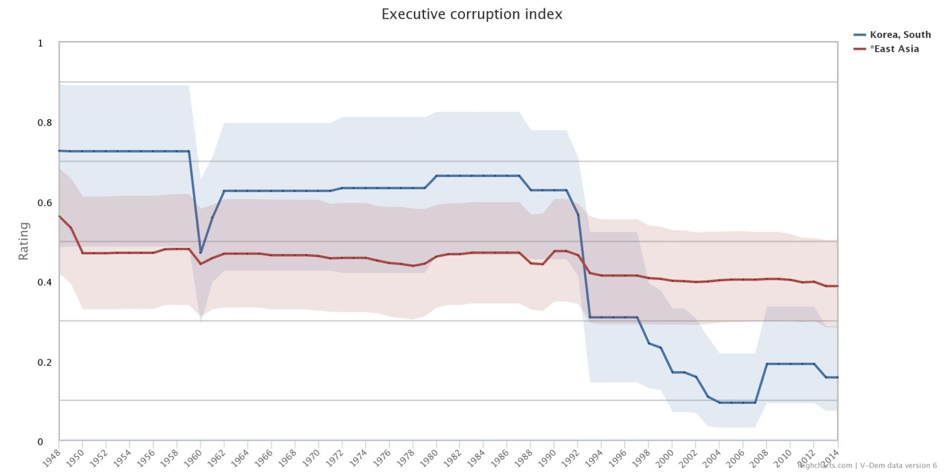Executive Corruption in South Korea
By: V-Dem Staff
Jan 16, 2017
The events have led to major protests in South Korea demanding the President’s immediate resignation while the Constitutional Court is still deciding the case. This week’s graph takes a look at executive corruption in South Korea.
Using V-Dem’s Variable Graph Tool, we compare the Executive Corruption Index in South Korea to the average of East Asian countries. The index measures how routinely members of the executive grant favors in exchange for bribes, and how often they steal or misappropriate public funds. It is aggregated from the V-Dem indicators for executive bribery and executive embezzlement. High values indicate that a country is more corrupt, while low values indicate less corruption.
A relatively high level of executive corruption can be observed in South Korea during the first years of independence between 1948 and 1958. Following the Korean War, the level of executive corruption decreased but was then followed by a longer period of higher levels of executive corruption. Corruption decreased remarkably after the introduction of democratic governance in the late 1980s and has been in decline ever since. It was at this point, that South Korea drops below the average level of executive corruption for East Asia, which has remained somewhat constant during the period under consideration.
To learn more about corruption in South Korea or any other country, use the Online Analysis Tool on V-Dem.net.


